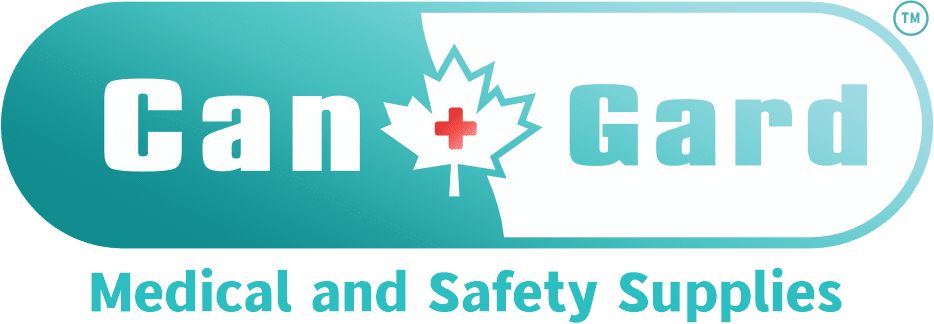No products in the cart.
First Aid/PPE
What are the Limitations of PPE?
PPE stands for Personal Protective Equipment, and many people have heard of it. However, not everyone knows precisely what PPE is used for or the limitations of PPE.
In this blog post, we will break down what personal protective equipment is and who should wear it to protect themselves from workplace hazards. We will also discuss how to maintain your body protection to keep yourself safe while on the job!
When you wear your PPE at work, there are some things to keep in mind:
Picking out the right size gear that fits comfortably but securely. If something doesn’t fit properly or feels tight enough, it should not be worn to avoid accidents. For example, if you will be working with chemicals, it is essential to wear gloves and eyewear
It’s also essential to know your PPE limitations and how often they should be replaced. The longer a person has been using their body protection, the more likely they will need new equipment and knowing when something needs replacing, such as skin irritation or burns due to wearing old clothing without proper ventilation. Be sure to check the tags on your clothes so you can see their expiration date to make an informed decision about whether or not it is time for them to go!
What are the limitations of PPE for healthcare professionals?
PPE is only effective when it’s appropriately used and replaced on time.
It can be expensive to purchase the equipment needed for safety from hazardous materials. Still, healthcare professionals should ensure they have appropriate protection to avoid more severe injuries or even death.
This type of gear protects-Not all body parts: some parts such as hands need a glove over them while other areas like feet may not require any shoe coverings because there isn’t anything that could cause injury to these areas.
When working with chemicals, it’s essential to wear gloves and eyewear! If you’re going out in public without your protective equipment, then try wearing clothing inside out, so others don’t see what you’re trying to hide.
It can be expensive to purchase the equipment needed for safety from hazardous materials. Still, healthcare professionals should ensure they have appropriate protection to avoid more severe injuries or even death.
Why is it important to wear PPE in certain situations?
Wearing a specific PPE, such as gloves, is vital to avoid transmitting dangerous diseases.
The most common example of hazardous material and the one that has probably already come up in conversation are Ebola-infected fluids.
However, there are many other situations where it can be necessary or advisable for an individual to wear PPE:
PPE is only effective when it’s appropriately used and replaced on time.
It can be expensive to purchase the equipment needed for safety from hazardous materials. Still, healthcare professionals should ensure they have appropriate protection to avoid more severe injuries or even death.
This type of gear protects-Not all body parts: some parts such as hands need a glove over them while other areas like feet may not require any shoe coverings because there isn’t anything that could cause injury to these areas.
When working with chemicals, it’s essential to wear gloves and eyewear! If you’re going out in public without your protective equipment, then try wearing clothing inside out, so others don’t see what you’re trying to hide.
It can be expensive to purchase the equipment needed for safety from hazardous materials. Still, healthcare professionals should ensure they have appropriate protection to avoid more severe injuries or even death.
Why is it important to wear PPE in certain situations?
Wearing a specific PPE, such as gloves, is vital to avoid transmitting dangerous diseases.
The most common example of hazardous material and the one that has probably already come up in conversation are Ebola-infected fluids.
However, there are many other situations where it can be necessary or advisable for an individual to wear PPE:
Who should be wearing PPE in the workplace?
Any person who is going to be working with hazardous materials should wear the appropriate PPE.
Practical instruction on how best to prepare for a biological or chemical emergency is often not given much attention in schools. Many people may feel that they do not need it because “it will never happen.” However, it’s essential to know what precautions you should take now so that if an emergency does occur, you’ll be prepared.
What are some things we can do right now?
There are several ways to safeguard ourselves from infection at home: Cleaning up spills around our homes (even when nothing has been spilled!), wearing gloves is an excellent way of avoiding exposure, and any time children play outside (especially near rivers).
How does a person know if they need to wear PPE at work?
If the occupation is about handling hazardous chemicals, using a respirator is required.
If the risk of exposure to blood or body fluids is high (e.g., healthcare worker), wearing gloves and goggles is a vital PPE that should be worn at all times.
What about if you don’t work with hazardous materials?
No matter what kind of job you have, there’s always some risk for injury – whether it’s from minor cuts, burns, or even scrapes on your hands. Protective equipment like gloves can help protect against infection when working in dirty environments or handling sharp objects such as knives and needles.
Additionally, people who are around animals may need to wear masks depending on the type of environment they’re surrounded by; pet owners must also take precautions,
When should a worker stop wearing their PPE at work and why?
Workers can stop wearing their PPE if they are not in a hazardous area. However, workers should never stop wearing protective equipment all together (i.e., gloves) even when entering an environment where the probability of injury is low, and there’s no chance for contamination or infection.
Workers who wear gloves:
- Workers with cuts on their hands that might get infected; the glove will protect these cut to prevent any bacteria from getting into them
- Protects against abrasions because it creates a barrier between your skin and sharp objects – such as needles and knives
- Preventing surface scratches on hand skin which can lead to dermatitis or infections if scratched deep enough without protection
- Lessens the risk of puncture wounds caused by contact
What are some examples of how someone would use personal protective equipment daily?
Persons who use personal equipment daily are:
- Doctors, nurses, and other health care professionals
- Pet groomers who need to work with animals whose bites can transmit rabies or other diseases
- Animal control personnel routinely handle stray dogs, feral cats, and wild animals that may carry infectious diseases.

